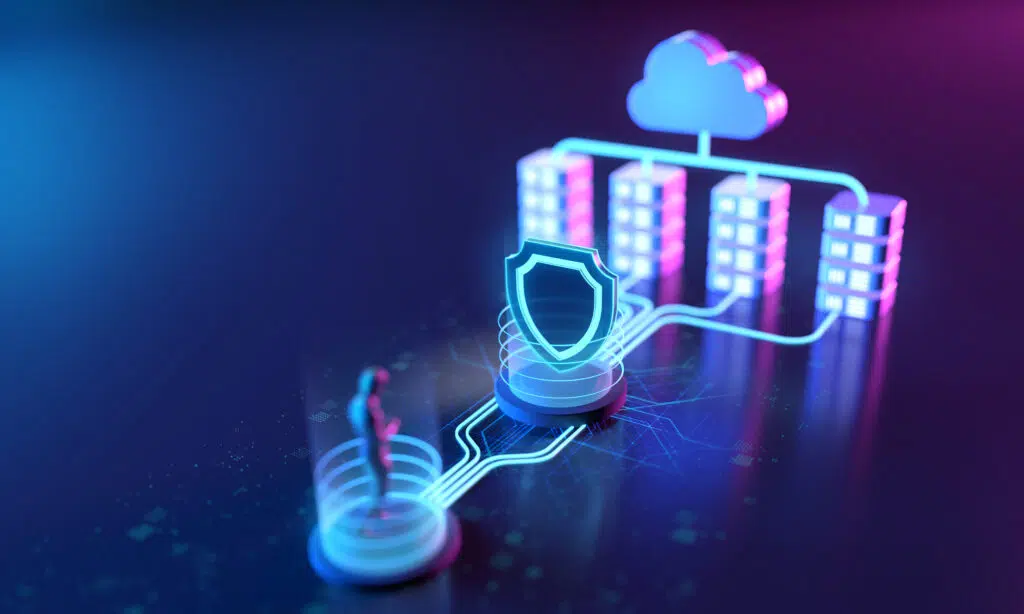
Implementing a Remote Workforce: SaaS, VPN, and The Cloud
First, it’s important to consider the three levels of converting to a remote workforce: Saas, VPN, and the cloud. Then, before making any changes, your business should ask:
The costs of implementation and maintenance?
After cost, are there tools you need to learn?
Then, any new workflows would need to be developed?
Will you allow a Bring Your Own Device policy? Do you have existing company-managed laptops? If so, are you able to purchase and deploy more of these?
Finally, how will you manage changes in the remote work culture?
Level 1: (SaaS) Implementing Software as a Service Solutions
Much of Level 1 involves the implementation of applications that are “plug and play” solutions meaning, most of the technical details are taken care of by the vendor.
Slack is an excellent solution for remotely managing teams. Then, Microsoft Teams is one of the best options for simulating an office workspace. After, consider Zoom which helps simulate proximity. Finally, Microsoft’s Office 365 and Google’s G-Suite allow your employees to easily share files and comment on working documents, all in real-time.
Call Forwarding
The simple solution is to leverage any capabilities existing systems offer to automatically redirect calls to your teams’ respective home office or cell phone. But, if your phone systems don’t support this, we suggest it’s time for an upgrade to one of the more modern VoIP systems.
CRM Systems
HubSpot CRM or Salesforce. Not only does modern software allow you to access customer data from anywhere in the world, but many also incorporate mobile apps and built-in customer calling for remote telecommunications.
Multi-factor Authentication (MFA)
Then, MFAs can help manage the security of work-from-home employees. A good example of MFAs: Google asks for your phone number and a verification code.
Secure File Sharing Solutions
Cloud-based solutions like G-Suite Enterprise Essentials, Dropbox Business, and Microsoft’s One Drive for Business all offer security and access control for most situations while providing a fairly plug-and-play setup.
Antivirus Solutions
Finally, your company should go out of its way to ensure that all devices that are being used to enable remote work have up-to-date antivirus protection software.
Level 2: VPN, Remote Desktop, and Other Essentials
Network Access Via Secure VPN
First, VPNs are a tool that provides a secure connection between any remote work location and your office network. While access requires a more hands-on configuration and management, the increased control and ability to keep most systems as they are makes this worthwhile.
Accessing your office workstation via RDP
Then, Remote Desktop Protocol (RDP) provides access to the graphical user interface from a distance via the home office or other offsite computers. To maintain security and compliance requirements, RDP is typically utilized in conjunction with your VPN. Users connect to the VPN with a computer or mobile device. Now, they can access your network resources as if you were on-site by establishing an RDP connection. When you’re finished working, disconnect from the VPN.
Voice Over IP (VoIP)
Just as the name implies, Voice Over IP technology allows you and your employees to place and receive phone calls over the internet, rather than traditional telecom infrastructure using your own extensions. VoIP allows much more flexibility in implementation and configuration over traditional telecom systems.
Nextiva, is a business VoIP service provider that brings messaging, video, and phone together behind a sleek user interface. LogMeIn This is a remote access solution that enables your distributed team to securely access their local computer desktops from a distance.
Next-Generation Firewall
For instance, you’ll want protection that’s able to block malware from entering your network, and unfortunately, traditional firewalls fall short of this. A good example of a quality next-generation firewall vendor is Sophos XG. Their XG Firewall solution comes with a suite of offerings.
Business Continuity Disaster Recovery (BCDR)
Finally, the security measure that should be considered at this level is business continuity disaster recovery. Datto Unified Continuity solution allows for the speedy recovery of any lost on-site data via cloud backup while also ensuring efficient data and ransomware protection.
Level 3: Cloud Infrastructure Migration
This level involves migrating the majority, if not all, of your data infrastructure to the cloud. It allows for greater scalability, mobility, and by design offers superior data protection in the event of a disaster.
Microsoft Azure, most similar to traditional on-premise infrastructure setups, supports a variety of databases, programming languages, frameworks, and tools. Amazon Web Services access a variety of tools such as encryption key creation, auditing, and the customization of infrastructure requirements. Google Cloud Platform offers an extensive array of modular web services and provides a secure, multi-layered infrastructure that guarantees greater security.
Choosing Your Cloud Type
Public Cloud
First, AWS, Azure, Google Cloud, and Alibaba Cloud are all public cloud types. Anyone can utilize public clouds, and because they come with prebuilt infrastructures, they’re generally the simpler option to go with.
Private Cloud
Second, they’re specifically established to meet your company’s unique needs for greater customization and personalized security. Private clouds can be constructed locally, or hosted via third-party providers. Private cloud platforms include VMware’s vCloud and OpenStack.
Hybrid Cloud
Finally, this merging of the two types allows for greater flexibility, allowing users to move workloads, applications, and stored data that needs to be passed between your public and private spaces.
Managing Your Transition to Remote Work
If you decide that managing the transition of this scale on top of your current workload is simply too much, take some weight off your shoulders by considering our Managed IT and Network Services.




